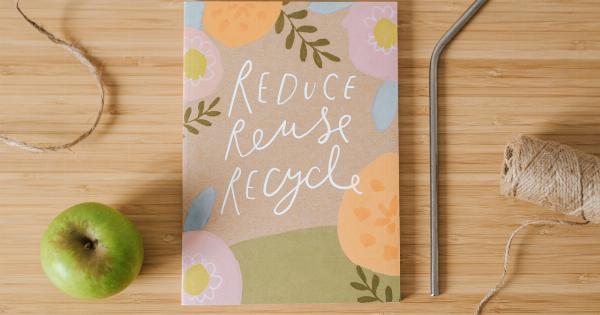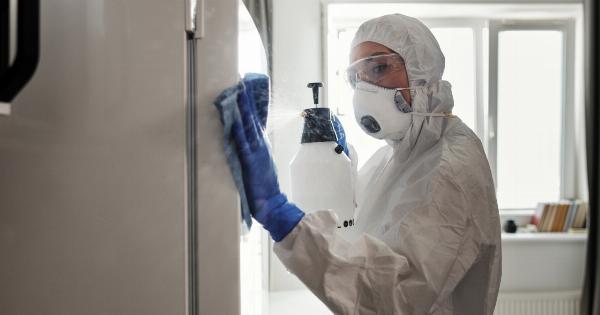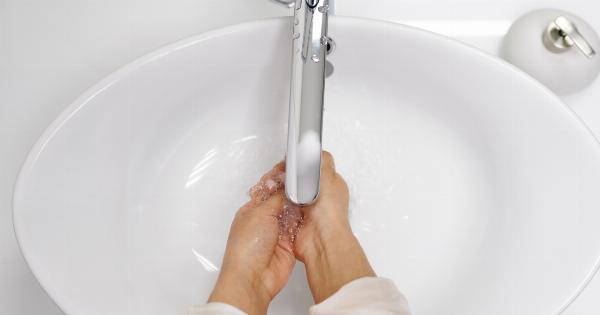Fruits and vegetables are an essential part of a healthy diet. They provide us with essential vitamins, minerals, and fiber, which help in boosting our immune system and overall well-being.
However, it is crucial to ensure that the fruits and vegetables we consume are thoroughly cleaned to eliminate any potential contaminants, such as pesticides, dirt, and bacteria, that may be present on their surfaces.
Why is Cleaning Fruits and Vegetables Important?
Before we delve into the effective ways of cleaning fruits and vegetables, it is important to understand why this process is so crucial. Here are a few reasons:.
1. Removing Pesticides and Chemical Residues
Fruits and vegetables are often treated with pesticides to protect them from pests and diseases. These chemical residues can sometimes linger on the surface, even after washing. Consuming such residues can have adverse effects on our health.
Therefore, it is essential to clean our produce thoroughly to reduce pesticide exposure.
2. Eliminating Dirt and Debris
Fruits and vegetables can often be contaminated with dirt, soil, and other debris during harvesting, packaging, and transportation. These particles can carry harmful bacteria and microorganisms, which can lead to foodborne illnesses.
Proper cleaning helps remove these contaminants, making the produce safe for consumption.
3. Reducing the Risk of Foodborne Illnesses
Cleaning fruits and vegetables plays a crucial role in preventing foodborne illnesses. Bacteria like Salmonella and E. coli can reside on the surface of produce, causing severe infections if ingested.
By thoroughly cleaning our fruits and vegetables, we can significantly reduce the risk of such illnesses.
Effective Ways to Clean Fruits and Vegetables
Now that we understand the importance of cleaning our produce let’s explore some effective methods to ensure their cleanliness:.
1. Wash with Cold Water
The most basic and simplest method of cleaning fruits and vegetables is to rinse them thoroughly with cold tap water. Hold the produce under running water and gently rub its surface to remove any dirt or debris.
This method helps eliminate a significant amount of contaminants, but it may not be sufficient for removing pesticide residues.
2. Scrub with a Brush
In the case of produce with a hard outer surface, such as potatoes, cucumbers, or carrots, it is beneficial to scrub them with a clean brush. This helps remove any stubborn dirt or pesticide residues.
Make sure to choose a brush with soft bristles to avoid damaging the skin of the fruits or vegetables.
3. Soak in Vinegar Solution
A vinegar solution is another effective way to clean fruits and vegetables, especially those that have been treated with wax or have a smooth surface.
Fill a bowl with a mixture of three parts water and one part vinegar, and soak the produce for about 15-20 minutes. Rinse them thoroughly afterward to remove any vinegar taste.
4. Use Vegetable Wash
Vegetable wash products are specifically designed to remove pesticides, wax, and other contaminants from the produce. Follow the instructions on the packaging and thoroughly rinse the fruits or vegetables after using the wash.
It is important to note that vegetable washes are not necessary for all produce, especially if you are buying organic fruits and vegetables.
5. Peeling and Trimming
In some cases, peeling the outer skin of fruits and vegetables can significantly reduce the amount of pesticide residues and bacteria present on them. However, keep in mind that peeling also removes valuable nutrients and fiber.
If you choose to peel, do so carefully and ensure that the knife or peeler is clean.
6. Learn which Produce Requires Extra Attention
Not all fruits and vegetables require the same level of attention when it comes to cleaning. Some produce items, such as leafy greens, berries, and broccoli, tend to harbor more pesticides and contaminants due to their structure.
It is important to give them extra care by soaking, rinsing, and gently rubbing them.
7. Use Saltwater Solution for Leafy Greens
Leafy greens often contain a considerable amount of soil, insects, and pesticides. To clean them effectively, prepare a saltwater solution by dissolving two teaspoons of salt in a large bowl of water.
Submerge the greens in the solution for a few minutes, then rinse them thoroughly to remove any remaining salt.
8. Steam or Blanch for Leafy Greens
If you want to go the extra mile in ensuring the cleanliness of leafy greens, consider steaming or blanching them. This method not only removes contaminants but also helps retain some of the essential nutrients.
After steaming or blanching, rinse the greens with cold water to stop the cooking process and remove any residual dirt or debris.
9. Dry Thoroughly
After cleaning your fruits and vegetables, it is important to dry them thoroughly. Moisture can promote the growth of bacteria, so using a clean cloth or paper towel to dry them off after washing is essential.
Once dry, store them in a clean and dry container or refrigerator to maintain their freshness.
10. Be Mindful of the Source
Lastly, being mindful of the source of your fruits and vegetables can play a significant role in their cleanliness. If possible, opt for locally grown, organic produce, which is generally less exposed to extensive pesticide use during cultivation.
Additionally, choose reputable suppliers or farmers who prioritize the hygiene and cleanliness of their produce.
Conclusion
Cleaning fruits and vegetables effectively is essential for maintaining good health and preventing foodborne illnesses.
By following the methods mentioned above, you can ensure that your produce is free from harmful contaminants, such as pesticides, bacteria, and dirt. Remember to incorporate these effective cleaning practices into your routine to safeguard the health of you and your loved ones.




























